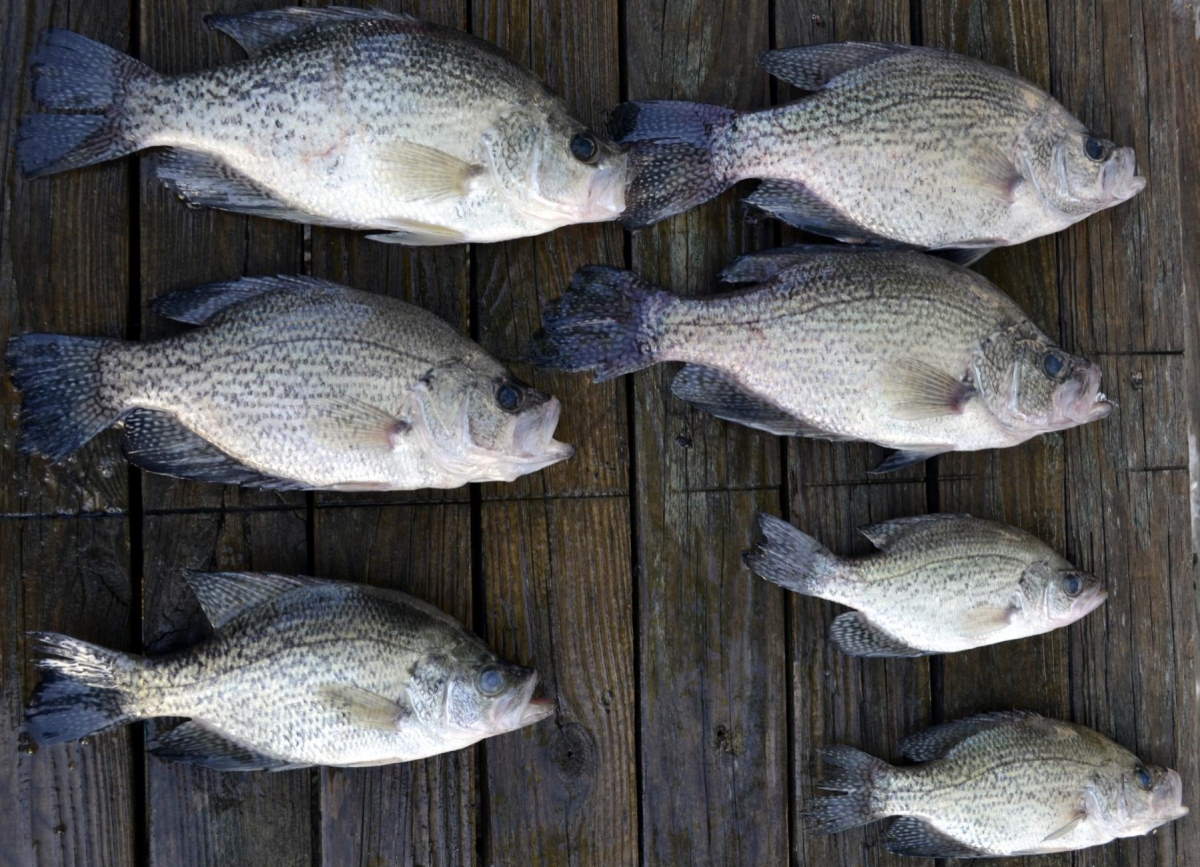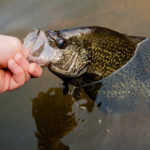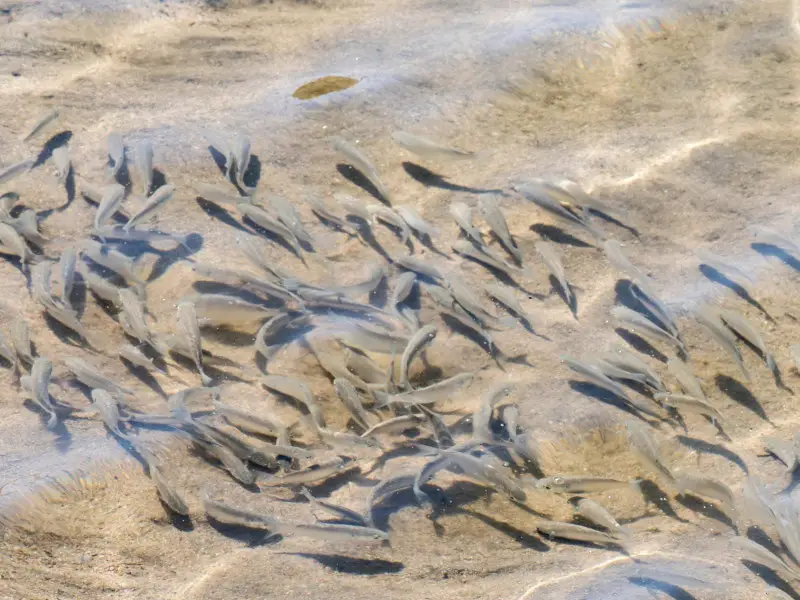They may not be as popular as rainbow trout or largemouth bass, but crappies are certainly one of the most treasured game fish in North America.
Crappie can get as larger as two pounds if the environment is good. However, in rare cases, you may be able to reel in something bigger. The average crappie size is around 10 inches and under one pound, which you should consider a good catch.
To help you learn more about this freshwater fish, I have put together a handy guide that will answer all your questions about crappies. This list includes who holds the world record for catching the largest fish, if its size varies with type or location, and if the age of crappie can affect its length and weight.
Note: most links in this article are Amazon.com Affiliate links, see Affiliate Disclosure, thank you.
What is the World Record Largest Crappie?
In November 1969, Lettie Robertson reportedly caught six-pound black crappie in Louisiana. The National Freshwater Fishing Hall of Fame still lists this massive catch as the world-record crappie. However, the International Game Fish Association (IGFA) has retired the record due to the lack of photos and witnesses.
Currently, Lionel “Jam” Ferguson holds the All-Tackle World Record for catching the biggest black crappie to date. He made history by hooking a 5 lbs 7.68 oz freshwater fish on May 15, 2018, while angling in a small, private spring-fed pond near Philadelphia, Tennessee.
Ferguson used a Kalin’s 2-inch Triple Threat Grub attached to a 1/8 oz jig, and it took him about five minutes to land the 19.25-inch-long black crappie. The officers from the Tennessee Wildlife Authorities also weighed and measured the fish. They even sent its DNA to a laboratory to confirm it was indeed black crappie.
Meanwhile, Fred Bright of Memphis holds the IGFA All-Tackle World Record for hooking a 5 lbs 3 oz white crappie at Enid Lake in Mississippi on July 31, 1957. According to the reports, Bright had used Action Rod and a Denison-Johnson reel to catch the 21-inch-long world-record crappie. He also filled out affidavits and had sufficient witnesses and documentation to verify the size and length of his prized fish.
The lab results showed the white crappie was about ten years old and male. Interestingly, Bright was the only person to have ever hooked it.
Do Different Types of Crappie Grow to a Different Size?
There are two main types of freshwater crappies: black crappies and white crappies. Both species have similar sizes and shapes, with only a few distinctive features that can help fishermen tell them apart. It is also important to clarify that each of these crappie types can be light or dark in color. Thus the best way to differentiate between the two is by observing their dorsal spines, markings, and habitat.
Black crappies usually live in calm with heavy vegetation or in mud bottoms of freshwater bodies. They have asymmetrical dark spots and about seven to eight spines in the dorsal fin.
Meanwhile, white crappies prefer open waters during the morning and evening but are most likely to hide in calm and shallow waters during the day. This species has a relatively compressed shape, symmetrical dark stripes, and around five to six spines in the dorsal fin.
Does Crappie Size Depend on the Location?
It is widely believed that crappies are bigger in the south, also reflected in the US state crappie records. While the biggest crappies caught in other states weighed around 4 lbs or under, the ones caught in Louisiana, Tennessee, Arkansas, South Carolina, Mississippi, Kentucky, and Georgia are usually heavier.
In addition, a 2008 report by the Minnesota Department of Natural Resources found that the lengths of one-year-old black and white crappies increased from north to south. The researchers stated the growth patterns could be related to the spawning and hatching times of these fish. They also determined that older crappies living in more productive waters are likely to be bigger.
According to the study, black crappies with longer lengths were found in freshwater bodies with “higher gill net catch per unit effort (CPUE) of walleye.” On the other hand, white crappies with longer length mostly lived in lakes with very “low trap net CPUE of pumpkinseed.” Moreover, the aquatic plant diversity also appeared to affect the growth patterns of these highly prized fish.
You may also be interested to know that the black crappie has an extremely extensive habitat. It can be found in most rivers, reservoirs, ponds, and lakes all the way from Virginia to Florida along the Atlantic coast and from the Gulf of Mexico to Texas. You can also hook this freshwater species in the Great Lakes, St. Lawrence River, and the Mississippi River basins.
Does Age Affect How Big a Crappie Can Get?
Unfortunately, there is no definitive answer to this question.
Biologists have found that crappies grow about three to five inches in their first year and up to seven or eight inches in their second before reaching the age of maturity. It is hard to determine if some crappies continue to grow bigger as they age or if their size results from their diet and foraging habits.
The Minnesota Department of Natural Resources report also concluded that the length of black crappies between ages one and five differed significantly among 32 waterbodies analyzed within the state. However, the white crappie size remained more or less the same among nine lakes and reservoirs tested for the study.
It was also found that white crappies are usually a little longer than black crappies at a younger age. However, as they grow older, black crappies can become just as long. The research study also determined that the length of black crappie is likely to decline between the ages four and five due to the increased fishing pressure.
Conclusion
Crappies are among the most highly regarded panfish in North America. They are fun to catch and delicious to eat, making them a favorite among most fishing enthusiasts.
The crappie size varies from north to south, with research indicating that the fish in productive waters are likely to grow bigger. Moreover, the natural habitat, aquatic biodiversity, food supply, and angling pressure significantly impact the size and weight of the freshwater species.





